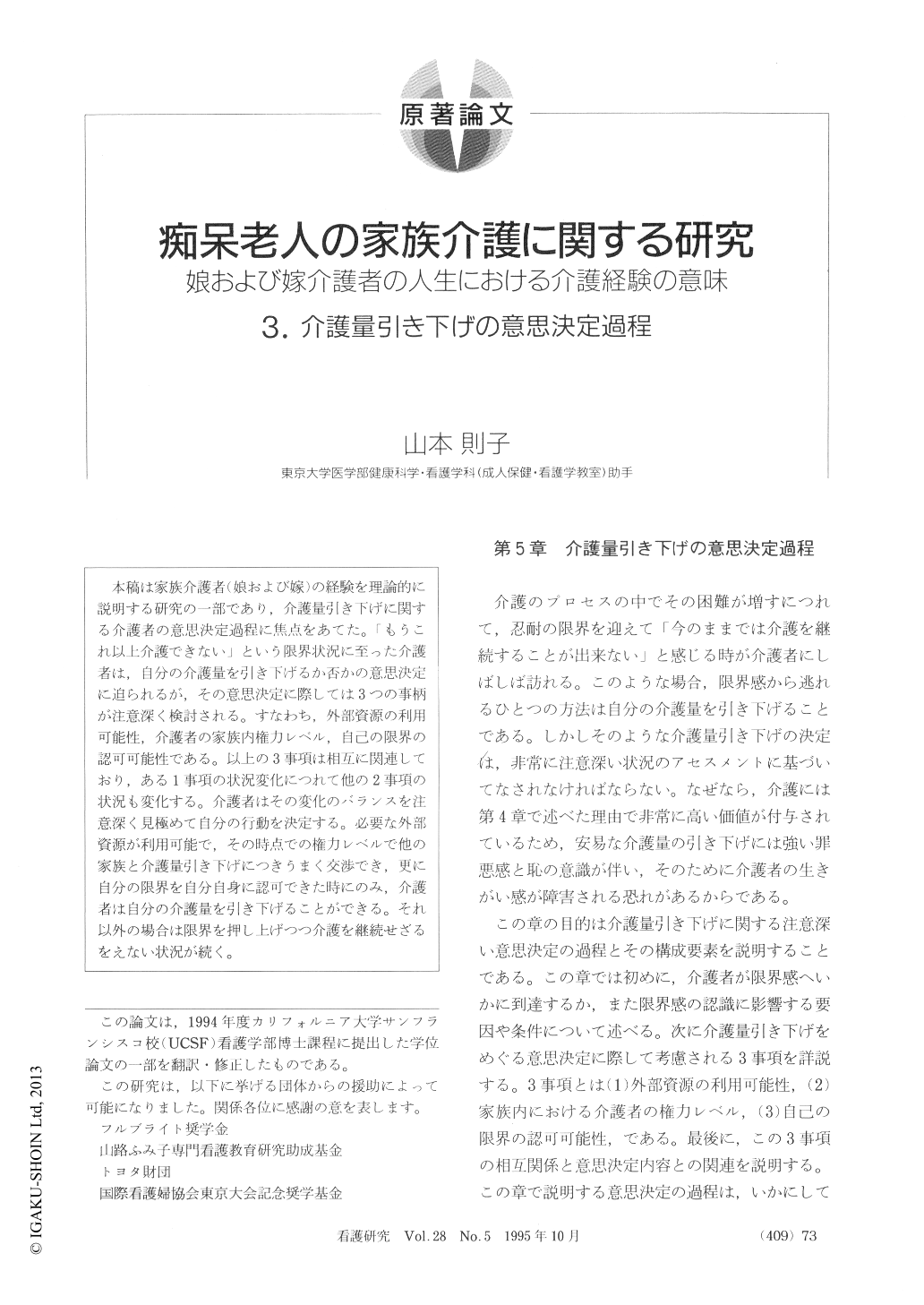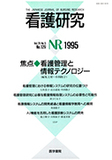Japanese
English
- 有料閲覧
- Abstract 文献概要
- 1ページ目 Look Inside
- サイト内被引用 Cited by
本稿は家族介護者(娘および嫁)の経験を理論的に説明する研究の一部であり,介護量引き下げに関する介護者の意思決定過程に焦点をあてた。「もうこれ以上介護できない」という限界状況に至った介護者は,自分の介護量を引き下げるか否かの意思決定に迫られるが,その意思決定に際しては3つの事柄が注意深く検討される。すなわち,外部資源の利用可能性,介護者の家族内権力レベル,自己の限界の認可可能性である。以上の3事項は相互に関連しており,ある1事項の状況変化につれて他の2事項の状況も変化する。介護者はその変化のバランスを注意深く見極めて自分の行動を決定する。必要な外部資源が利用可能で,その時点での権力レベルで他の家族と介護量引き下げにつきうまく交渉でき,更に自分の限界を自分自身に認可できた時にのみ,介護者は自分の介護量を引き下げることができる。それ以外の場合は限界を押し上げつつ介護を継続せざるをえない状況が続く。
This paper is a part of research on the experience of Japanese women caring for an elderly parent or parent in-law with dementia. It explains the process of decision making of the caregivers regarding whether or not they can reduce the level of their care-involvement, when they begin to feel they cannot continue to take care any more in the current environment. There are three issues assessed in this decision-making process, and the decision is reached through the careful balancing of them : Availability of outer resources, authority level of the caregiver within the family, and justifiability of tolerance limit. Caregivers decide to reduce their care-involvement level only when outer resources are available, when they can negotiate successfully with other family members at their given level ofauthority, and when they can justify the tolerance limit to themselves. At other times, they can only continue to take care in the same, or gradually elevated, level of care-involvement, pushing up their tolerance limit. Due to the high value assigned to caregiving, caregivers favor pushing up their tolerance limit as much as possible.
Regardless of the decision on the reduction of their care-involvement level, they struggle to continue to take care without losing their sense of ikigai , psychological well-being using several types of behavioral and cognitive strategies allowed in any given situation. Through such strategies, they attempt to come to terms with the reality of having to take care.

Copyright © 1995, Igaku-Shoin Ltd. All rights reserved.


